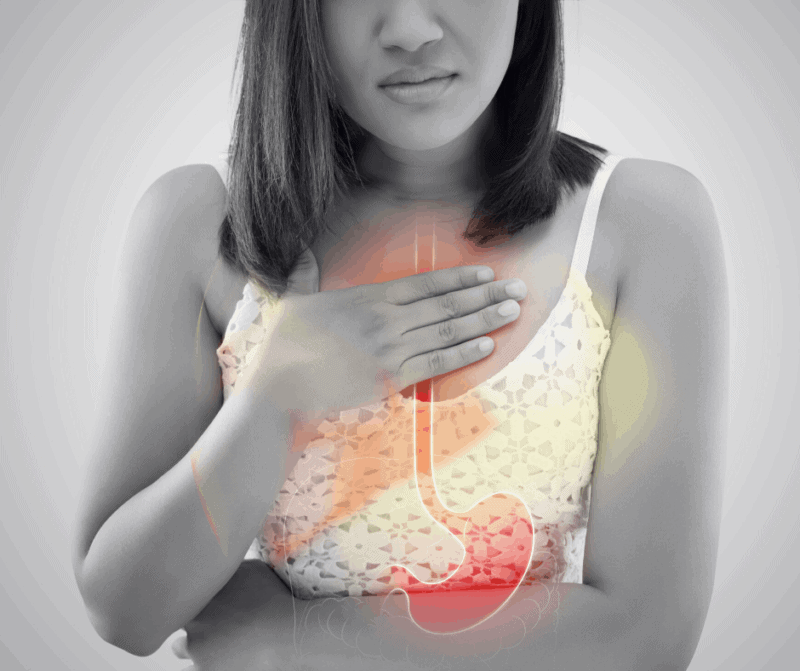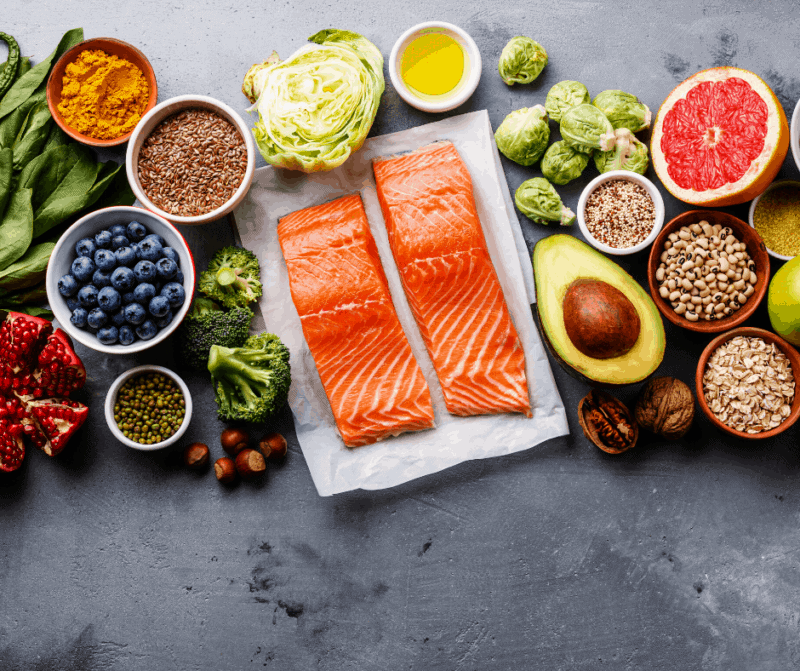What Causes Acid Reflux Disease?
 A hoarse voice and sore throat are often associated with the flu or a virus, but if you’ve had those symptoms for a while, they might be the result of acid reflux.
A hoarse voice and sore throat are often associated with the flu or a virus, but if you’ve had those symptoms for a while, they might be the result of acid reflux.
Acid reflux, otherwise known as heartburn, is when stomach acid or bile irritates the esophagus lining. This occurs when the muscle around the lower esophagus, the lower esophageal sphincter (LES), is weakened or does not close properly, allowing the acid produced to make its way back up. When this occurs, it exposes the sensitive tissues throughout your esophagus pipe, which can induce painful burning sensations.
Acid reflux can cause heartburn and other symptoms that include:
- Cough
- Sore throat
- Bitter taste in the back of the throat
- Sour taste in the mouth
- Burning and pressure that can extend up the breastbone
An estimated 14–20% of all U.S. adults experience acid reflux in some form or another. However, there is good news. Below, we break down 6 ways you can reduce acid reflux and heartburn without medication.
1. Quit Smoking
The nicotine from tobacco relaxes the valve between the esophagus and stomach. This can allow stomach acid and juices, the chemicals that break down food in the stomach, to back up into the esophagus, which causes heartburn.
Smoking may contribute to acid reflux disease by doing any of the following:
- Damaging mucus membranes
- Slowing or preventing muscle reflexes in the throat
- Triggering your stomach to make more acid
- Preventing the lower esophageal sphincter muscle from working well
- Cutting back on saliva, which neutralizes the effect of acid

2. Avoid Trigger Foods
What you eat can have an impact on acid reflux. Fatty and fried foods typically lower pressure on your LES and delay stomach emptying. This may boost your risk of reflux symptoms. To help prevent reflux, decrease your total fat intake.
High-fat foods to avoid, include:
- French fries and onion rings
- Potato chips
- Butter and whole milk
- Cheese and high-fat sour cream
- Ice cream
- Creamy sauces and dips
- High-fat cuts of red meat
The National Institute of Diabetes and Digestive and Kidney Diseases includes spicy foods on its list of foods that can make reflux symptoms worse. Pay attention to how you feel after eating specific spicy foods and consider your spice tolerance when planning meals.
Other foods and drinks that commonly trigger acid reflux include:
- Alcohol, particularly red wine
- Black pepper
- Garlic and raw onions
- Chocolate
- Citrus fruits
- Coffee and caffeinated drinks
- Peppermint
- Tomatoes

3. Eat Foods that Fight Acid Reflux
The foods you eat affect the amount of acid your stomach produces. Eating the right kinds of food is key to controlling acid reflux.
Foods that may help reduce your symptoms of acid reflux include:
- Vegetables
- Ginger
- Oatmeal
- Noncitrus fruits
- Lean meats and seafood
- Egg whites
- Healthy fats (avocados, walnuts, flaxseed, olive oil, sesame oil, and sunflower oil)
4. Eat Smaller Meals and Chew Slowly
Most reflux symptoms take place after a meal. As it’s harder for your digestive system to break down larger meals, bigger meals may worsen reflux symptoms. If you fill up too much, your stomach acid will likely bubble back up the esophagus.
Moreover, because digestion begins in the mouth, chewing slowly and more frequently before swallowing will enhance the digestive process and lower the risk of acid reflux.
Tips to help you slow down while eating, include:
- Put your fork or spoon down between bites
- Chew your food thoroughly before swallowing
- Chew 20 times or count to 20 before the next bite
- Take smaller bites
5. Stay Up After Eating
Lying down with a full stomach can cause stomach contents to press harder against the lower esophageal sphincter (LES), increasing the chances of refluxed food. When you’re standing, or even sitting, gravity alone helps keep acid in the stomach where it belongs.
Try these tips to avoid acid reflux:
- Wait at least two to three hours after eating to go to bed
- Avoid late-night snacking, late suppers, or naps after lunch
- Eat your heaviest meal of the day for lunch instead of supper
Moreover, you should avoid vigorous exercise for a couple of hours after eating. An after-dinner stroll is okay, but a more strenuous workout, especially if it involves bending over, can send acid into your esophagus.

6. Sleep on an Incline
Back sleeping is the least preferred position for those with acid reflux at night. When acid escapes from your stomach and you are sleeping flat on your back, it is able to flow freely into your esophagus and beyond. Also, lying down flat presses the stomach’s contents against the LES. Studies show that in this position, symptoms are often more frequent and tend to last longer because the acid has nowhere to go.
Research confirms that sleeping at an incline decreases reflux symptoms and allows your body to get stomach acid back to your stomach quicker. As long as your entire torso is elevated (not just your head and neck), sleeping at an incline helps gravity return stomach acid to your stomach and keep it there. Ideally, your head should be 6 to 8 inches higher than your feet.
You can elevate your head in a couple of ways:
- You can place bricks, blocks, or anything sturdy and securely under the legs at the head of your bed,
- You can use a wedge-shaped pillow under your head and shoulders.
